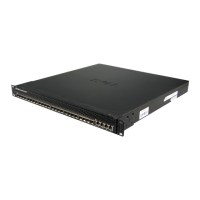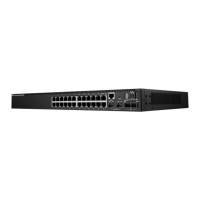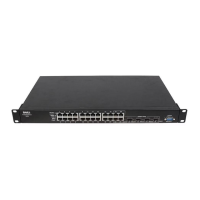116 Using the CLI
CLI Command Modes
Since the set of CLI commands is very large, the CLI is structured as a command-tree hierarchy,
where related command sets are assigned to command modes for easier access. At each level,
only the commands related to that level are available to the user and only those commands are
shown in the context sensitive help for that level.
In this guide, commands are organized into three categories:
• Layer 2 (Data Link Layer) commands
• Layer 3 (Network Layer) commands
• Utility Commands
Layer 2 (Data Link Layer) describes the logical organization of data bits transmitted on a
particular medium. This layer defines the framing, addressing and checksumming of Ethernet
packets.
Layer 3 (Network Layer) describes how a series of exchanges over various data links can deliver
data between any two nodes in a network. This layer defines the addressing and routing
structure of the Internet.
Utility describes commands used to manage the switch.
Commands that cause specific actions to be taken immediately by the system and do not
directly affect the system configurations are defined at the top of the command tree. For
example, commands for rebooting the system or for downloading or backing up the system
configuration files are placed at the top of the hierarchy tree.
Commands that result in configuration changes to the switch are grouped in a Configuration
sub tree.
There are levels beneath the Configuration mode for further grouping of commands. The
system prompt reflects these sub-Configuration modes.
All the parameters are provided with reasonable defaults where possible.
When starting a session, the initial mode is the User EXEC mode. Only a limited subset of
commands is available in this mode. This level is reserved for tasks that do not change the
configuration. To enter the next level, the Privileged EXEC mode, a password is required.
The Privileged EXEC mode provides access to commands that can not be executed in the User
EXEC mode and permits access to the switch Configuration mode.
The Global Configuration mode manages switch configuration on a global level. For specific
interface configurations, command modes exist at a sub-level.
Entering a <?> at the system prompt displays a list of commands available for that particular
command mode. A specific command is used to navigate from one command mode to another.
The standard order to access the modes is as follows: User EXEC mode, Privileged EXEC mode,
Global Configuration mode, and Interface Configuration and other specific configuration
modes.

